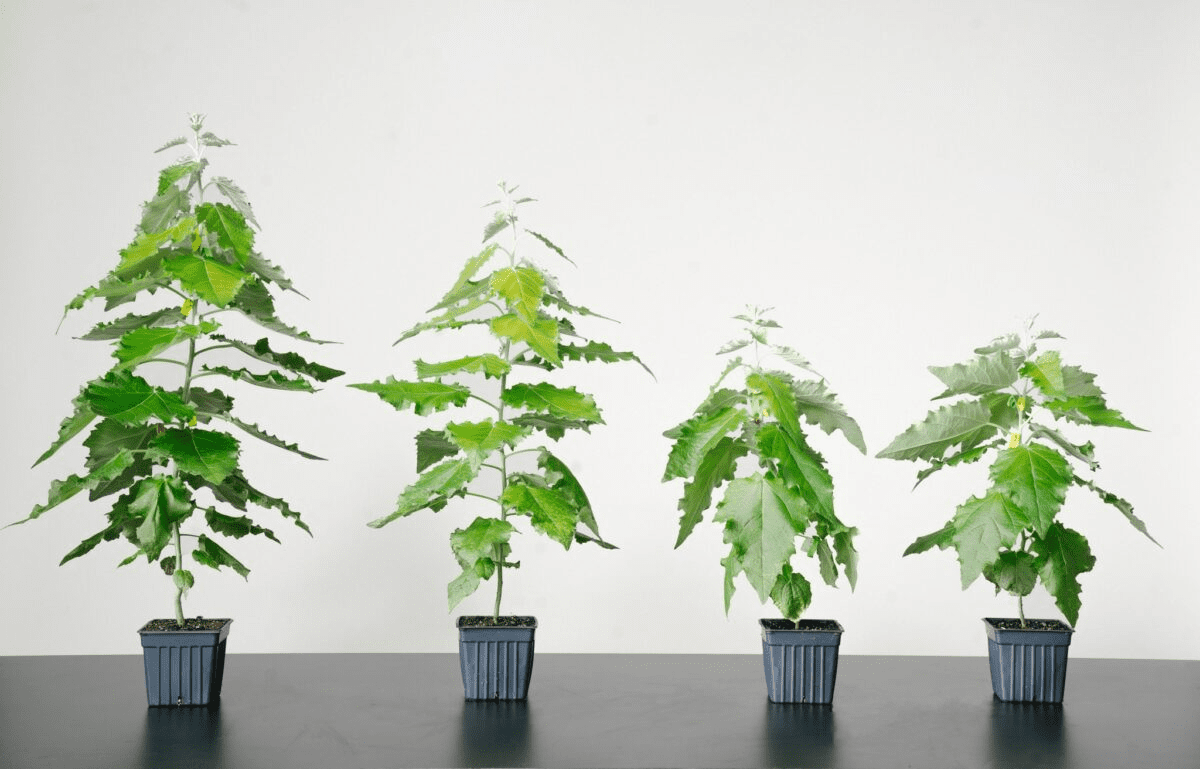Barely a week ago, in a low-lying tract of southern Georgia’s pine belt, a half-dozen workers planted row upon row of twig-like poplar trees. These weren’t just any trees, though some of the seedlings being burrowed into the soggy soil had been genetically engineered to grow wood at swift rates while slurping up carbon dioxide from the air (a bid to fight climate change).
The poplars could be the first genetically modified trees planted in the U.S. without a research trial or outside a commercial fruit orchard. Just as the introduction of the Flavr Savr tomato in 1994 introduced a new industry of GMO food crops, the tree planters hope to transform forestry.
Living Carbon, a San Francisco-based biotech company behind the poplars, intends for its trees to be a large-scale solution to climate change. “We’ve had people tell us it’s impossible,” Middle Hall, the company’s co-founder & CEO, said of her dream to deploy genetic engineering on behalf of the climate. But she & her colleagues have sloshing found believers- enough to invest $36 million in the 4-year-old company.
The company has also attracted critics. The Global Justice Ecology Project, an environmental group, has called the company’s trees “growing threats” to forests & expressed alarm that the federal government allowed them to evade regulation, opening a window to commercial plantings much sooner than is typical for engineered plants.
Living Carbon has yet to publish peer-reviewed papers; the only publicly reported results come from a greenhouse trial that lasted just a few months. “They have some encouraging results”, said Donald Ort, a University of Illinois geneticist whose plant experiments helped inspire Living Carbon’s technology.
Living Carbon‘s poplars start their lives in a lab in Hayward, California. There, biologists tinker with how the trees conduct photosynthesis, the series of chemical reactions plants use to weave sunlight, water, & carbon dioxide into sugars & starches. However, this chemical process is far from perfect. Numerous inefficiencies prevent plants from capturing & storing more than a small fraction of the solar energy that falls on their leaves. Those inefficiencies limit how fast trees grow, & how much carbon they soak up.
Similar Posts
In 2019, Ort & his colleagues announced that they had genetically hacked tobacco plants to photosynthesise more efficiently. Normally, photosynthesis produces a toxic byproduct that a plant must dispose of, wasting energy. The Illinois researchers added genes from pumpkins & green algae to induce tobacco seedlings into more sugars, producing plants that grew nearly 40% larger.
That same year, Hall, who had been working for ventures like Open AI, met her future co-founder Patrick Mellor at a climate technology conference. With money raised from venture capital firms, she & Mellor started Living Carbon. Their scientists retooled Ort’s genetic hack for poplar trees & then produced engineered poplar clones that grew in pots. Last year, the company said in a paper yet to be peer-reviewed that its tweaked poplars grew more than 50% faster than non-modified ones over five months in the greenhouse.
On the land of Vince Stanley a seventh generation farmer who manages more than 25, 000 forested acres in Georgia’s pine belt, mattock-swinging workers carrying backpacks of seedlings planted nearly 5,000 modified poplars. The tweaked poplars had names like Kookaburra & Baboon, which indicated which ” parent” tree they were cloned from, & were interspersed with a roughly equal number of unmodified trees.
In comparison to fast-growing pines, hardwoods that grow in bottomlands like these produce wood very slowly providing just one harvest in a landowner’s lifetime, Stanley said. He hopes Living Carbon’s “elite seedlings” will allow him to grow bottomland trees & make money faster. “We‘re taking a timber rotation of 50 to 60 years & we’re cutting that in half,” he said. “It’s orally a win – win.” To date, the only country where large numbers of genetically engineered trees are known to have been planted in China.


















